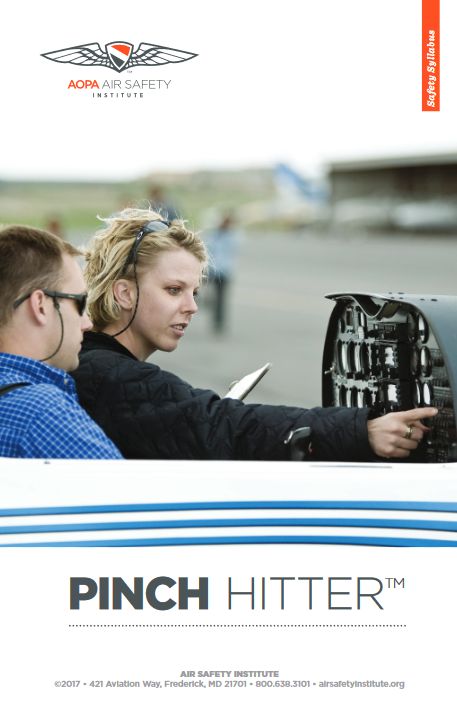Pilot incapacitation is extremely rare during general aviation flights, but non-pilots may worry about it if they don’t know what to do in the event of an actual emergency. Introducing non-pilot flying companions to basic flight concepts, and how to handle emergency situations, can help calm this anxiety.
Enter the early 1960s, the AOPA developed the Pinch Hitter™ course to do just that. Through the course, non-pilots learned to navigate to an airport, talk with air traffic control, and land an airplane safely—all on their own.
Today, your flying club members can tap into two free resources designed to be used together in pinch hitter training—the AOPA Air Safety Institute (ASI) course that provides non-pilots an interactive introduction to GA aircraft along with an understanding of basic aerodynamics concepts, and ASI’s recently developed Pinch Hitter™ syllabus.

The 14-page syllabus booklet guides non-pilot flying companions, flight instructors and experienced pilots through Pinch Hitter™ training. It also expands on the knowledge that participants gained from the course, and suggests ground and flight lessons to cover aircraft orientation and scenario-based training. The latter provides hands on instruction to deal with a simulated emergency. In addition, an in-flight guide and emergency checklist complete the syllabus booklet.
Please share these free resources with your club members, so their non-pilot companions can become more comfortable in the cockpit—an even participate as an effective crew-member while enjoying their flying adventures. ASI recommends that the person taking the course jots down questions or comments during the process. They can then discuss these afterwards with a flight instructor or other experienced pilot. Bear in mind that these resources are not intended as a "learn to fly" training program for student pilots. Yet, it has planted the flying bug in many—some of whom have gone on for more training, even earning their private pilot certificate.